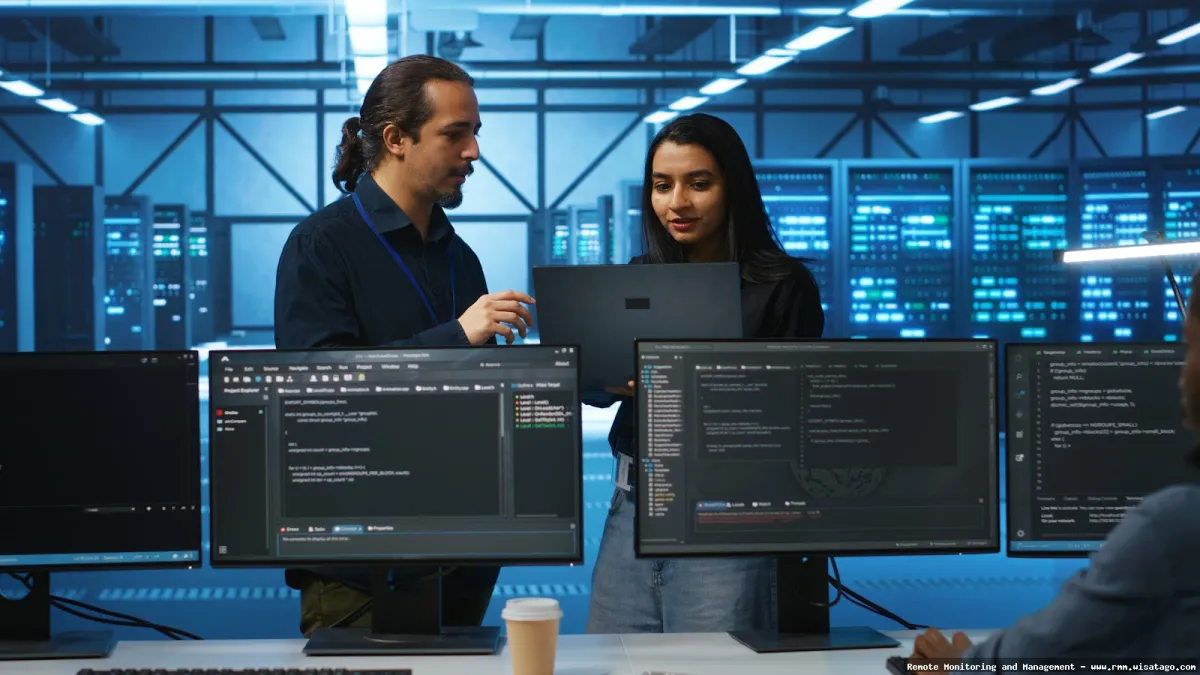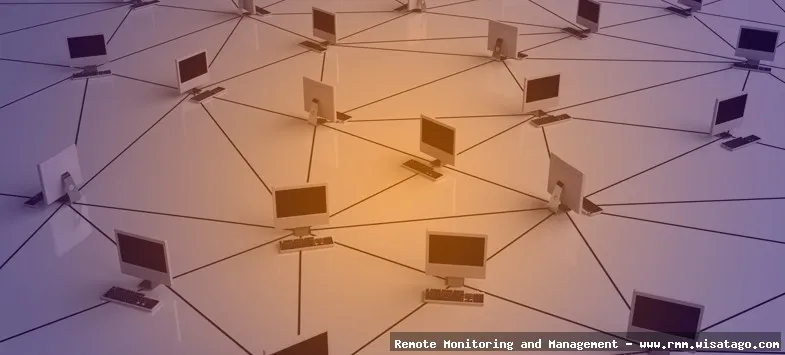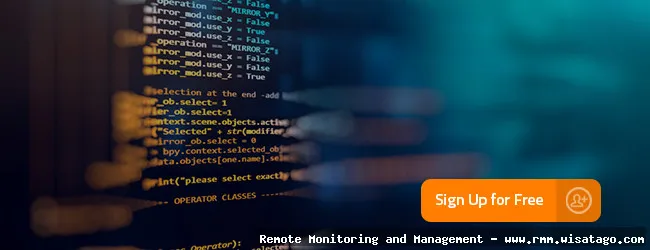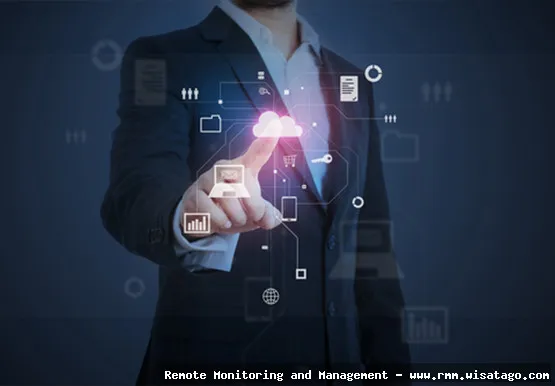In today’s complex IT landscape, managing and maintaining a vast network of devices and systems can feel like herding cats. Downtime is unacceptable, security threats are ever-present, and the demand for seamless performance is relentless. That’s where Enterprise-Grade Remote Monitoring and Management (RMM) software steps in, offering a lifeline to IT professionals drowning in operational challenges. Think of it as your central nervous system for IT management, providing visibility, control, and automation across your entire infrastructure.
This isn’t your grandpa’s monitoring tool. Modern RMM platforms are sophisticated suites designed to proactively identify and resolve issues before they impact end-users. They empower IT teams to remotely access devices, automate routine tasks, patch vulnerabilities, and ensure compliance with security policies. In essence, RMM allows you to manage more with less, freeing up valuable time and resources to focus on strategic initiatives that drive business growth.

Choosing the right RMM solution, however, can feel like navigating a minefield. The market is saturated with options, each boasting a unique set of features and capabilities. This guide aims to cut through the noise and provide a comprehensive comparison of leading enterprise-grade RMM software, highlighting key considerations, functionalities, and potential pitfalls. We’ll explore the critical aspects to evaluate, helping you make an informed decision that aligns with your organization’s specific needs and goals. Let’s dive in.
What is Enterprise-Grade RMM Software?
Enterprise-grade RMM software is a comprehensive suite of tools designed to remotely monitor, manage, and support IT infrastructure across large organizations. Unlike basic monitoring solutions, RMM platforms offer a robust set of features that enable IT teams to proactively address issues, automate tasks, and maintain the overall health and security of their systems.
Key Features of Enterprise-Grade RMM
Here’s a breakdown of the core functionalities you should expect from an enterprise-grade RMM solution:
- Remote Monitoring: Continuous monitoring of servers, workstations, network devices, and applications to detect performance issues, errors, and potential security threats.
- Remote Access & Control: Secure remote access to managed devices for troubleshooting, configuration, and support.
- Patch Management: Automated patching of operating systems and third-party applications to address vulnerabilities and maintain security compliance.
- Automation: Scripting and automation capabilities to streamline routine tasks such as software deployment, configuration changes, and system maintenance.
- Alerting & Notification: Real-time alerts and notifications based on predefined thresholds and events, enabling IT teams to respond quickly to critical issues.
- Reporting & Analytics: Comprehensive reporting and analytics tools to track performance metrics, identify trends, and demonstrate the value of IT services.
- Security Management: Features such as antivirus integration, endpoint detection and response (EDR), and vulnerability scanning to enhance security posture.
- Mobile Device Management (MDM): Management and security of mobile devices, including smartphones and tablets, within the organization.
- Backup & Disaster Recovery (BDR): Integrated backup and disaster recovery solutions to protect critical data and ensure business continuity.
- Service Desk Integration: Seamless integration with service desk platforms to streamline incident management and improve support efficiency.
Why Do Enterprises Need RMM Software?
The benefits of implementing enterprise-grade RMM software are substantial, especially for organizations with complex IT environments. Here’s why it’s a necessity:
Proactive Issue Resolution
RMM enables IT teams to identify and resolve issues before they escalate into major problems. By continuously monitoring systems and receiving real-time alerts, technicians can address performance bottlenecks, security vulnerabilities, and other potential issues proactively, minimizing downtime and preventing business disruptions.
Improved Efficiency and Productivity
Automation is a game-changer. RMM automates routine tasks such as patching, software deployment, and system maintenance, freeing up IT staff to focus on more strategic initiatives. This leads to improved efficiency, increased productivity, and reduced operational costs.
Enhanced Security Posture
Security is paramount in today’s threat landscape. RMM provides comprehensive security management capabilities, including vulnerability scanning, patch management, and antivirus integration. By proactively addressing security vulnerabilities and monitoring for suspicious activity, RMM helps organizations strengthen their security posture and protect against cyber threats.
Centralized Management and Visibility
RMM offers a centralized platform for managing and monitoring all IT assets, providing a single pane of glass view of the entire infrastructure. This centralized visibility simplifies IT management, improves decision-making, and enables IT teams to respond quickly to changing business needs.

Reduced Downtime and Business Disruption
By proactively addressing issues and automating routine tasks, RMM helps minimize downtime and prevent business disruptions. This ensures business continuity and reduces the financial impact of IT failures.
Scalability and Flexibility
Enterprise-grade RMM solutions are designed to scale with the organization’s growth. They can easily accommodate new devices, users, and locations, providing the flexibility needed to support evolving business requirements.
Key Considerations When Choosing RMM Software
Selecting the right RMM software requires careful consideration of your organization’s specific needs and requirements. Here are some key factors to evaluate:
Scalability and Performance
Ensure the RMM solution can scale to accommodate your current and future needs. Consider the number of devices you need to manage, the volume of data generated, and the performance requirements of your IT environment.
Feature Set and Functionality
Evaluate the features and functionalities offered by each RMM solution and determine which ones are most important to your organization. Consider factors such as remote access capabilities, patch management features, automation capabilities, and security management tools.
Integration Capabilities
Ensure the RMM solution integrates seamlessly with your existing IT infrastructure, including service desk platforms, security tools, and other business applications. Integration streamlines workflows, improves data sharing, and enhances overall efficiency.
Ease of Use and User Interface
Choose an RMM solution with a user-friendly interface and intuitive navigation. A well-designed interface simplifies IT management and reduces the learning curve for IT staff.
Security and Compliance
Ensure the RMM solution meets your organization’s security and compliance requirements. Consider factors such as data encryption, access controls, and compliance certifications.

Vendor Reputation and Support
Research the vendor’s reputation and track record in the RMM market. Consider factors such as customer reviews, industry recognition, and the quality of their support services.
Pricing and Licensing Model
Understand the pricing and licensing model of each RMM solution and determine which one best fits your budget. Consider factors such as per-device pricing, per-user pricing, and feature-based pricing.
Comparison of Leading Enterprise-Grade RMM Software
Here’s a brief overview of some of the leading enterprise-grade RMM software solutions available in the market. Note that this is not an exhaustive list, and the best choice for your organization will depend on your specific needs and requirements.
ConnectWise Automate
ConnectWise Automate is a popular RMM solution known for its robust automation capabilities and extensive feature set. It offers comprehensive remote monitoring, patch management, and scripting capabilities, making it a good choice for organizations with complex IT environments.
Kaseya VSA
Kaseya VSA is another leading RMM solution that offers a wide range of features, including remote monitoring, patch management, and security management. It’s known for its scalability and flexibility, making it a good choice for growing organizations. Effective IT management often necessitates remote monitoring and management, and RMM is a key strategy for achieving this
.
NinjaOne
NinjaOne (formerly NinjaRMM) is a cloud-based RMM solution that focuses on ease of use and simplicity. It offers a streamlined interface and intuitive navigation, making it a good choice for organizations that need a user-friendly RMM solution.
SolarWinds N-central
SolarWinds N-central is a comprehensive RMM solution that offers a wide range of features, including remote monitoring, patch management, and security management. It’s known for its scalability and integration capabilities, making it a good choice for large enterprises.
Datto RMM
Datto RMM is a cloud-based RMM solution that offers a comprehensive set of features, including remote monitoring, patch management, and security management. It’s known for its focus on security and its integration with Datto’s other security solutions.

Challenges of Implementing RMM Software
While RMM software offers numerous benefits, there are also some challenges to consider during implementation:
Initial Setup and Configuration
Setting up and configuring RMM software can be complex and time-consuming, especially for large organizations with diverse IT environments. Proper planning and configuration are essential to ensure the RMM solution functions effectively and meets the organization’s specific needs.
Training and Adoption
IT staff may require training to effectively use the RMM software and take advantage of its full capabilities. Resistance to change and lack of adoption can hinder the success of the RMM implementation. Providing adequate training and promoting the benefits of RMM can help overcome these challenges.
Data Overload and Alert Fatigue
RMM software can generate a large volume of data and alerts, which can overwhelm IT staff and lead to alert fatigue. Proper configuration of alerting thresholds and filtering mechanisms is essential to ensure that IT staff only receive notifications for critical issues.
Integration Issues
Integrating RMM software with existing IT systems and applications can be challenging, especially if the systems are not compatible or use different protocols. Careful planning and testing are essential to ensure seamless integration and prevent data conflicts.
Security Risks
RMM software can introduce new security risks if not properly secured. It’s essential to implement strong security measures, such as multi-factor authentication and access controls, to protect the RMM platform and prevent unauthorized access.
Conclusion
Enterprise-grade RMM software is an indispensable tool for modern IT organizations. By providing proactive monitoring, automation, and centralized management capabilities, RMM empowers IT teams to improve efficiency, enhance security, and reduce downtime. While implementing RMM can present some challenges, the benefits far outweigh the risks. By carefully evaluating your organization’s needs and selecting the right RMM solution, you can unlock significant improvements in IT performance and business outcomes. Remember to consider scalability, features, integration, ease of use, security, vendor reputation, and pricing when making your decision. With a well-chosen and properly implemented RMM solution, you can transform your IT operations from reactive firefighting to proactive management, ensuring a stable, secure, and efficient IT environment.
Conclusion
Choosing the right enterprise-grade RMM software is a critical decision that can significantly impact your IT efficiency, security posture, and overall business success. As we’ve explored, the landscape is diverse, with solutions offering varying strengths in areas like automation, patch management, remote access, and reporting. Ultimately, the “best” RMM isn’t a universal concept but rather the one that aligns most closely with your specific organizational needs, technical expertise, and budget constraints. Careful consideration of these factors, coupled with a thorough evaluation of each platform’s capabilities, is paramount.
This comparison guide has aimed to provide a comprehensive overview to aid in your decision-making process. We encourage you to revisit the key features and functionalities discussed, carefully weighing the pros and cons of each RMM solution in the context of your unique environment. Don’t hesitate to leverage free trials and demos offered by vendors to gain hands-on experience and ensure a proper fit. Ready to take the next step? Explore the linked resources within each product review for more in-depth information and to schedule a personalized consultation with the respective RMM providers. Finding the right RMM is an investment in your future, and we hope this guide has empowered you to make an informed choice.
Frequently Asked Questions (FAQ) about Enterprise-Grade RMM Software Comparison Guide
What are the key factors I should consider when choosing enterprise-grade RMM software, and how does the comparison guide help me evaluate these factors effectively?
Choosing the right enterprise-grade RMM software is crucial for managing and securing a complex IT infrastructure. Key factors to consider include scalability, security features (like multi-factor authentication and patch management), automation capabilities, reporting and analytics, integration with other IT tools, and vendor support. The comparison guide helps you evaluate these factors by providing a structured overview of different RMM solutions, highlighting their strengths and weaknesses in each area. It often includes feature matrices, pricing comparisons, and user reviews. By analyzing this information, you can identify which RMM best aligns with your specific business needs, budget, and technical requirements. Furthermore, consider a trial period of the selected RMM software to test its capabilities firsthand before making a final decision. This will help ensure a smooth implementation and long-term success.
How can an Enterprise-Grade RMM Software Comparison Guide help me justify the investment in a new RMM solution to my stakeholders and leadership team?
An Enterprise-Grade RMM Software Comparison Guide is a valuable tool for justifying the investment in a new RMM solution. It provides objective data on different RMM platforms, allowing you to demonstrate a well-researched decision-making process. The guide helps you articulate the benefits of a new RMM, such as improved efficiency through automation, enhanced security posture with proactive threat detection and patch management, and reduced downtime through remote monitoring and troubleshooting. By comparing features, pricing, and user reviews, you can build a compelling business case that highlights the return on investment (ROI) of the new RMM. Quantify the potential cost savings by reducing manual tasks, preventing security breaches, and improving overall IT performance. This data-driven approach will increase the likelihood of gaining buy-in from stakeholders and the leadership team, ensuring a successful implementation.
Besides price, what are the less obvious but equally important factors covered in the RMM software comparison guide that can significantly impact the total cost of ownership (TCO) of an enterprise RMM solution?
While price is a primary concern, the total cost of ownership (TCO) of an enterprise RMM solution involves several less obvious factors. An RMM software comparison guide helps uncover these hidden costs. Implementation costs, including setup fees, data migration, and initial training, can significantly impact TCO. Consider the ongoing training requirements for your IT staff to effectively utilize the RMM’s features. Integration capabilities with existing IT infrastructure are crucial; poor integration can lead to increased manual effort and potential compatibility issues, raising costs. Scalability is also vital; a solution that doesn’t scale efficiently as your business grows can lead to expensive upgrades or replacements. Finally, factor in the cost of vendor support and maintenance, including response times and service level agreements (SLAs). A comprehensive comparison guide will shed light on these hidden costs, allowing for a more accurate assessment of the true TCO.